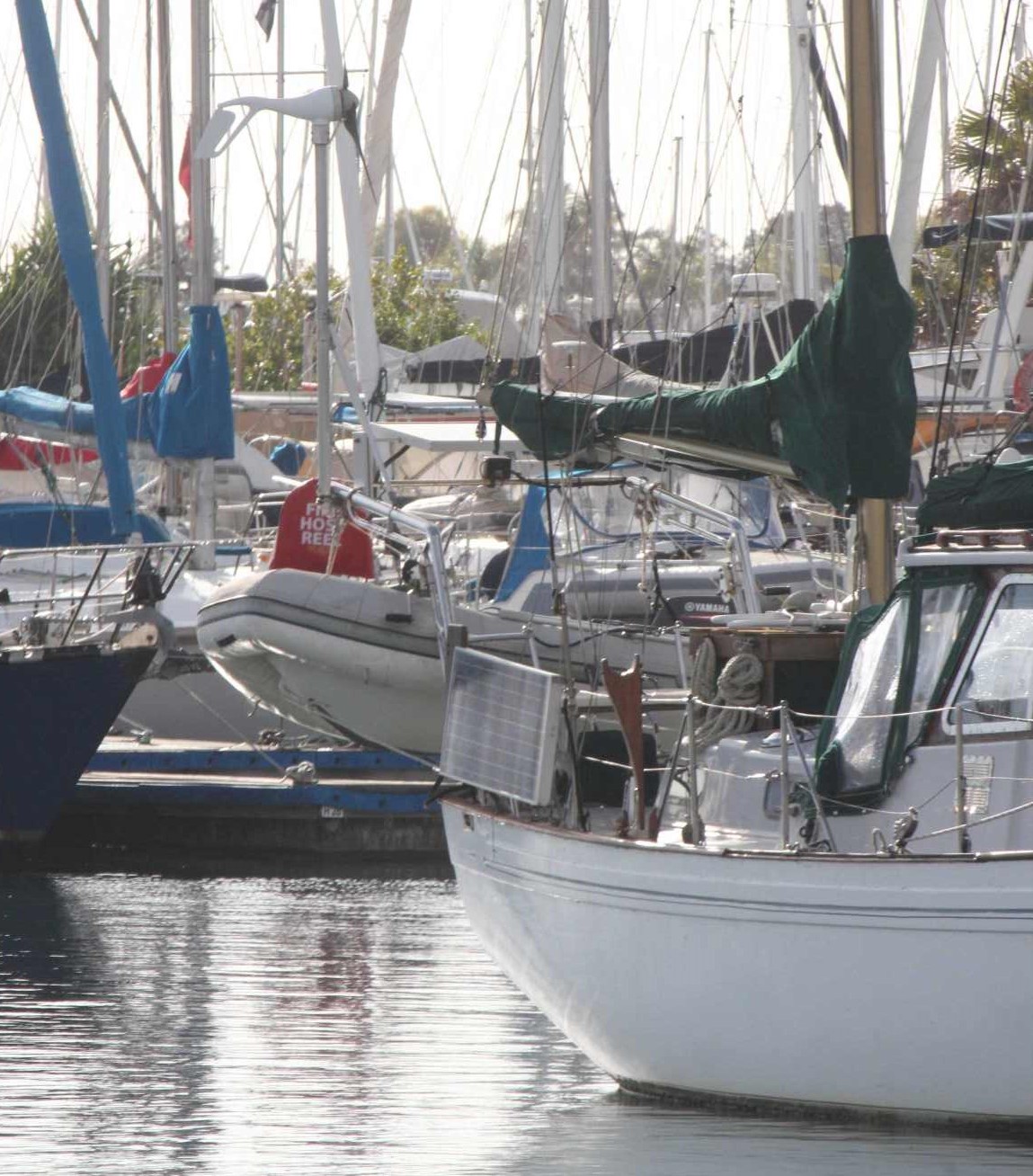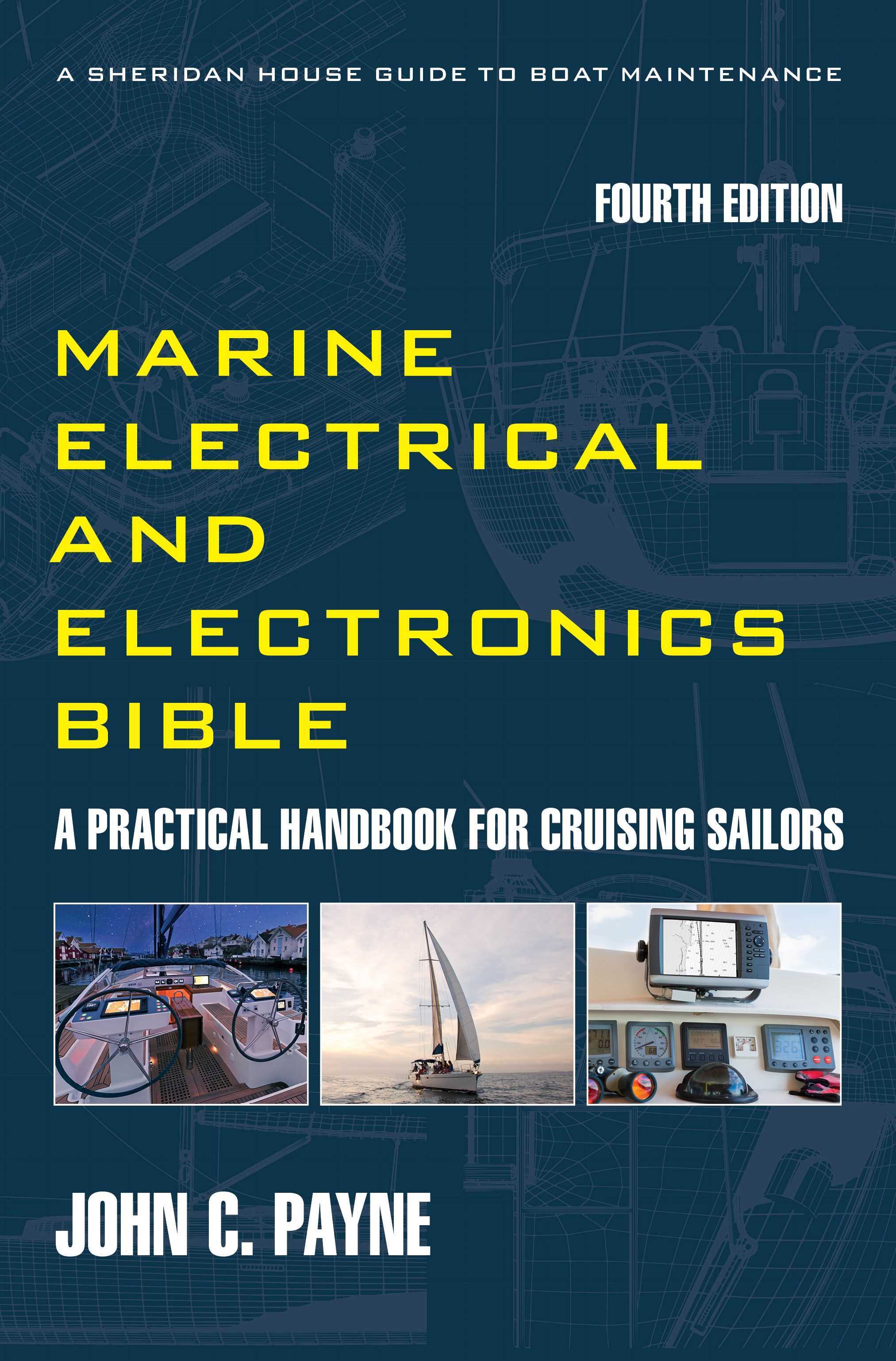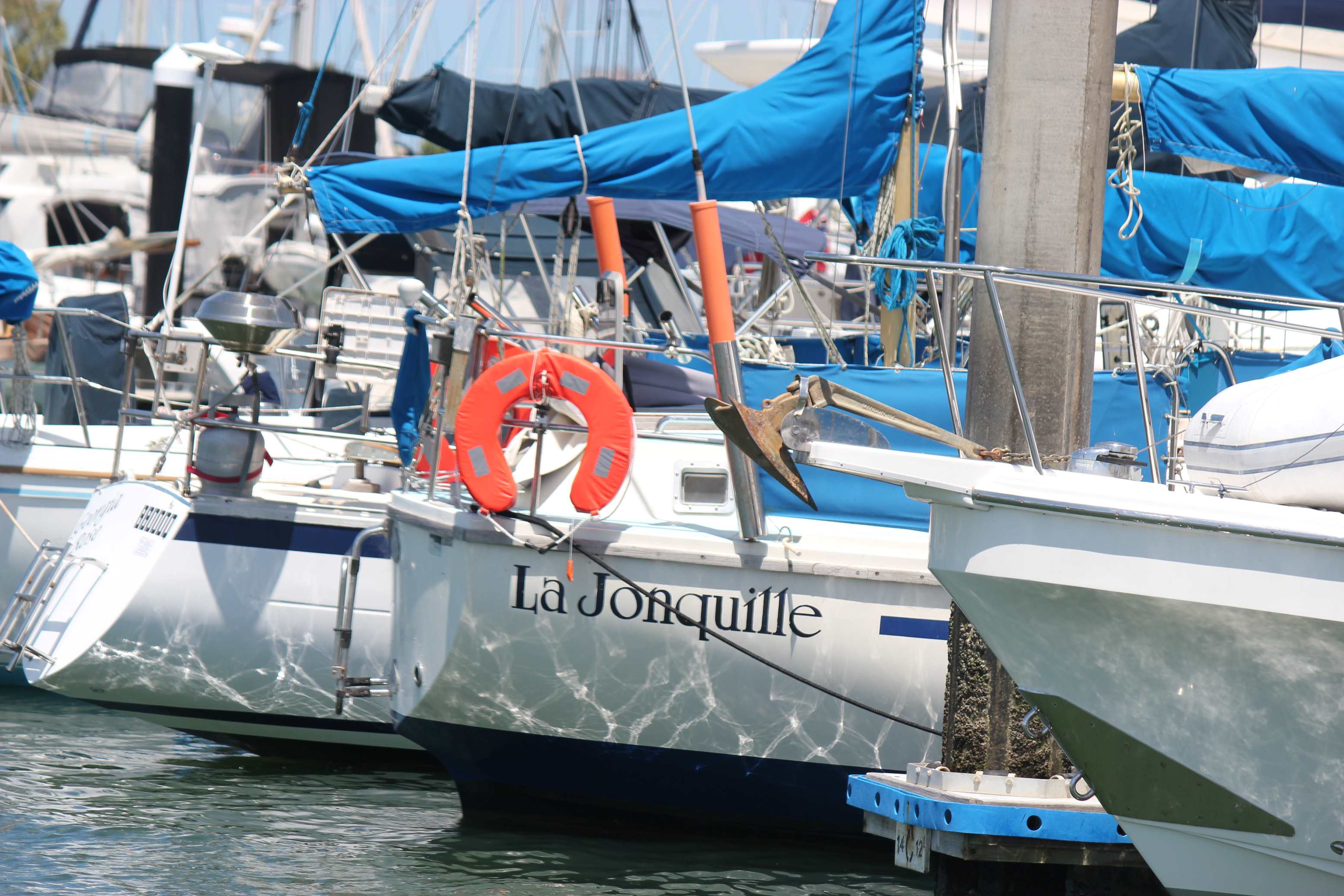Living on a small boat
This website is all about living on a small boat and the sailboat liveaboard life. Being a liveaboard person myself and also a professional marine electrical person I want to share everything I have learnt about living aboard or sailing and cruising. It is all about liveaboard sailboats (as well as those with motorboats, trawler yachts, canal boats, Dutch barges, peniches, houseboats) and everything about cruising and living on a boat. It is also about how to actually get yourself afloat with the many things you need to know about liveaboard boats and it also asks the important questions of exactly what is a liveaboard? What is a small boat? For this website and my information sharing I would include any boat from around 25 feet up to around 40 feet as a small boat. If it can be sailed by two people or sailed solo then it's small and if you need a crew then perhaps it is getting beyond small.
Living on a sailboat and cruising is a great lifestyle but it is not for everyone, and often realities impact soon after you move aboard. Buyers remorse is a common affliction. So I will try to convey a certain level of expectation management. The lifestyle is sometimes challenging, requires quite a great level of resourcefulness, stoicism, resilience and a high level of patience. It is a steep learning curve for those new to boats and the sea. For some cabin fever, social isolation and disconnection can set in rather quickly. Living on a boat encompasses many different boat types, and this is not just limited to monohull sailing boats.
The 4th Edition of the Marine Electrical Electronics Bible Get your copy and start becoming self sufficient and save money on expensive technician callouts.Living on a small boat
There are many who live on
catamarans, and others who reside on trawlers and motorboats. Living on a yacht or any boat is an achievable
dream. There are people who live on houseboats and there are people who people
who live on European barges (been there and done that, and highly recommended) and canal or narrow boats in the
UK. The range of boat types adapted for living afloat is wide and varied.
For many, living afloat is a viable alternative to expensive housing and which
for many these days it is utterly unaffordable. For others it is a great way to withdraw from the
frenetic city and urban lifestyle. The motivation for living on a boat is
as varied as the boat types. By profession I am a marine electrical and marine
engineer, as well as marine surveyor, and after a lifetime living afloat, I
have learnt much about living aboard.
This liveaboard section will be about advice, learned and lived experiences to help people who are relatively new to liveaboard boat life and how to resolve challenges and enjoy the experience. I have many inspirational quotes to share and that I refer to so as to stay focused on the cruising lifestyle.
My Liveaboard Life
I live aboard my boat. I have lived aboard a boat for most of my life in some form or another if I take into account my merchant marine background as well. For many years my home was a small cabin on old tramp freighters and offshore oil drilling rigs. My first liveaboard sailing boat was an old steel Herreshoff ketch, which I bought as part of incomplete project, with bare hull and all the bits stowed in a shed. It took me over two years of hard work to rebuild it and that was easier for me as I am in the marine industry and had the knowledge and some competencies, but more on that subject later. My second liveaboard boat was a 34 foot wooden sloop that I purchased through a friend, it was run down and lying in Belgium. So, between alternating my day job building oil rigs in Asia and then restoration work and living part time on the boat it took me near two years again before I finished and went cruising through Europe, the UK and down to the Mediterranean. While I was berthed in Belgium I met some folk with a 70 foot, 110 year old Dutch barge. Several years later they put it for sale and I was quick to buy it and take a break from sailing. Yes, I had some work to do, there is always work to do, and once that was done, I lived aboard for 8 years cruising the canals and rivers of Europe. I missed sailing and cruising and have completed refitting my 36 foot ketch and ready to go cruising again.
I am a professional Marine Electrical and Marine Systems Engineer and Marine Engineering Surveyor. I am also the author of The Marine Electrical and Electronics Bible, the 4th Edition is due out soon, and along with the Motorboat Electrical and Electronics Manual; the Understanding Boat series of books; The Fisherman’s Electrical Manual and Piracy Today. As my passion is sampling and enjoying local cruising cuisine, I did publish many years ago The Great Cruising Cookbook, or Cruisine©, as I like to call it. The latest and very extensive edition will be published on this website. I am a member of the ABYC, the UK Cruising Association and the Westerly Owners Association.
Living on a small boat - About Locations
Many choose living on a small boat in a marina, where that is available, but that is also becoming a greater challenge. This can be linked to employment or a desire to have some home comforts, such as laundry, shower and toilet facilities or Wi-Fi access. Finding a marina that will accept you as a liveaboard is often hard in most places in the USA.
The next option is finding a suitable mooring to rent or lease, much cheaper and one has to commute ashore with the dinghy. The next option is finding a suitable anchorage without any overhead fees and charges, this of course brings in new obstacles and again we will discuss this later.
Then there are those who choose the cruising route, and have short term visits to marina's and moorings. They spend time in a anchorage or pay for a much cheaper mooring and also use the dinghy or tender to access shore facilities. This dramatically reduces costs but is not available everywhere. If you are a long-term cruising liveaboard and not linked to shore for too much then you will choose to go to peaceful and quite anchorages, hit the supermarkets when needed along with topping up water and fuel and where required pumping out the holding tank.
Living on a boat - How much does it Cost?
living on a small boat is not cost
free, especially if you live aboard in a marina. If you have to finance your
boat then you have payments to keep up with. The first cost is the slip
fees, often cheaper if you pay six monthly or annually. For people who live
aboard in short periods such as the summer cruising season, there are
surcharges for use of the marina facilities. Of course some marina’s
don’t allow liveaboards. Then there is the insurance cover, and for many
marina’s that is quite comprehensive as well, you cannot escape insurance coverage when visiting marinas. Some marinas charge for the
electricity use and that can add up. If you need professional help with
engines, electrical, plumbing or other systems they do not come cheap so some
self sufficiency is essential. If you are doing a refit while living aboard
many marinas ban such activities as they create noise, dust and so on. Even
living aboard in a marina still results in boat haul out costs every year or
longer if you stretch the dates. Bottom cleaning, antifoulant application and
other maintenance all cost money so needs to be included in the budget. Then there
are LPG gas costs for cooking, and also your usual food costs, but many
cruisers find that can be done economically with new skills. If you have
to pump out a sewage holding tank there are often charges associated with that
as well. Then there are other issues such as health insurance and so on
to consider. Many cruising liveaboards find insurance hard to get or the premiums exorbitant so don’t carry any. Check out all the pages on this site for guidance, advice and suggestions on how to avoid paying too much, getting it right first time and avoiding needless drama and incidents that spoil the experience.
Recent Articles
-
Water Maker for Boat
Dec 11, 25 11:18 PM
the Water Maker for Boat is a transformational system that increases cruising autonomy -
Boat waste treatment systems
Dec 11, 25 10:56 PM
Boat waste treatment systems are an essential part of living aboard a yacht -
Anchor Well Drain
Dec 11, 25 10:40 PM
The Anchor Well Drain is important to boat safety and stability, have you checked outyours





